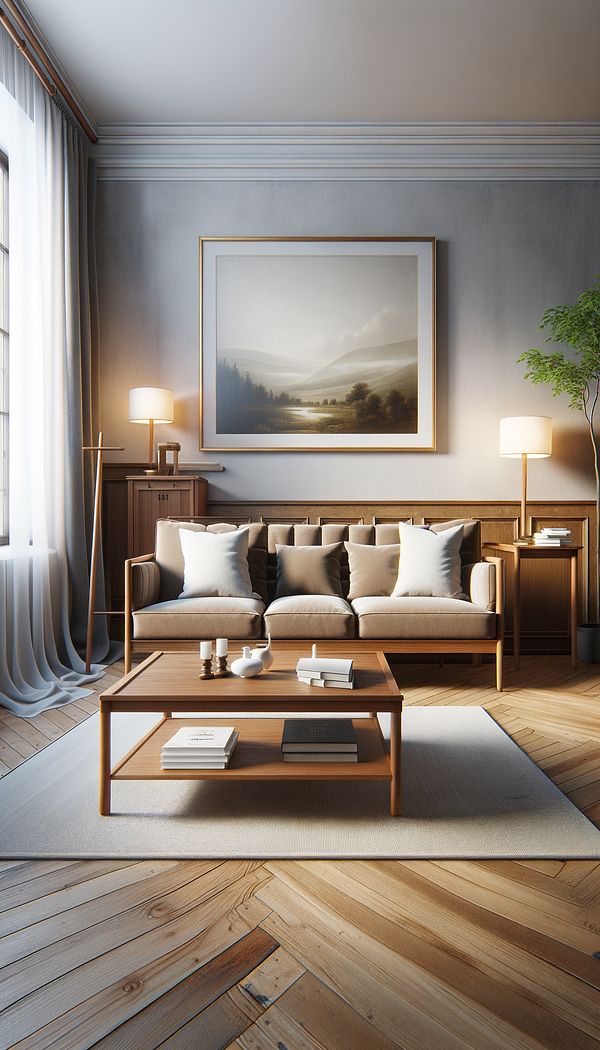What is Beidermeier?
Biedermeier refers to a style of furniture and interior design that originated in Germany and Austria in the early 19th century.
Description
Biedermeier is a term that encapsulates a distinct style of furniture and interior design that emerged in Germany and Austria during the period between 1815 and 1848, following the Napoleonic Wars. It signifies a shift towards simplicity and functionality, moving away from the elaborate ornamentation that characterized the previous styles. The Biedermeier period coincided with a growing middle class, which influenced the design elements to be more practical, comfortable, and accessible, without sacrificing elegance.
Biedermeier furniture typically features clean lines, minimal decoration, and a focus on the natural beauty of the wood. Dark and polished woods, such as cherry, oak, and mahogany, are commonly used. While the furniture itself might be simple, it is often complemented by soft furnishings, intricate inlays, and fine craftsmanship that add an element of luxury. This style extends to interior design as well, where rooms are designed to be cozy and inviting, with a focus on domestic comfort and family life.
The influence of Biedermeier design is still present today, especially in the emphasis on functional, yet beautiful, living spaces that cater to everyday needs. Its legacy can be seen in contemporary movements that prioritize simplicity, comfort, and sustainability in design.
Usage
In a modern context, Biedermeier influences can be seen in minimalist designs that prioritize functionality and comfort. For instance, a living room that employs clean lines, natural wood furniture with little to no ornamentation, and a warm, inviting atmosphere may carry the essence of the Biedermeier style. Additionally, the focus on craftsmanship and quality in furniture making aligns with current trends towards sustainability and durability.
FAQs
-
What distinguishes Biedermeier furniture from other styles?
Biedermeier furniture is distinguished by its clean lines, minimal decoration, and emphasis on the natural beauty and texture of wood. It differs from other styles by its focus on simplicity, functionality, and comfort, catering to the emerging middle-class tastes of the early 19th century.
-
How does Biedermeier style influence modern interior design?
Biedermeier style influences modern interior design through its principles of simplicity, functionality, and comfort. Contemporary designs often echo these values, embracing minimalism, quality craftsmanship, and the use of natural materials to create inviting and sustainable living spaces.
-
Can Biedermeier style be incorporated into contemporary homes?
Yes, Biedermeier style can be seamlessly incorporated into contemporary homes. This can be achieved through the selection of furniture that embodies the style's clean lines and minimalistic design, complemented by warm, neutral color schemes and the strategic use of textiles to add comfort and elegance.
Practical Application
When incorporating Biedermeier style into contemporary interiors, focus on selecting furniture pieces crafted from dark, polished woods with simple, elegant lines. Emphasize comfort and functionality in your space planning, using soft furnishings and warm lighting to create inviting atmospheres. Although the Biedermeier style leans towards minimalism, don’t shy away from adding personal touches through art, decorative objects, or intricate wood inlays that reflect the craftsmanship of the era.
-
Hand TiedHand tied refers to a construction technique used in high-quality furniture and rugs.
-
Antique FinishAn antique finish refers to a surface treatment that gives an item the appearance of age and wear.
-
EmbossingEmbossing is a decorative technique where a design is created on a surface so that it stands out in relief.
-
Ball & ClawBall & Claw is a type of furniture leg that resembles an animal’s claw holding a ball.
-
Knock Down A WallKnocking down a wall involves the process of removing a wall to open up space or change the layout of an interior.
